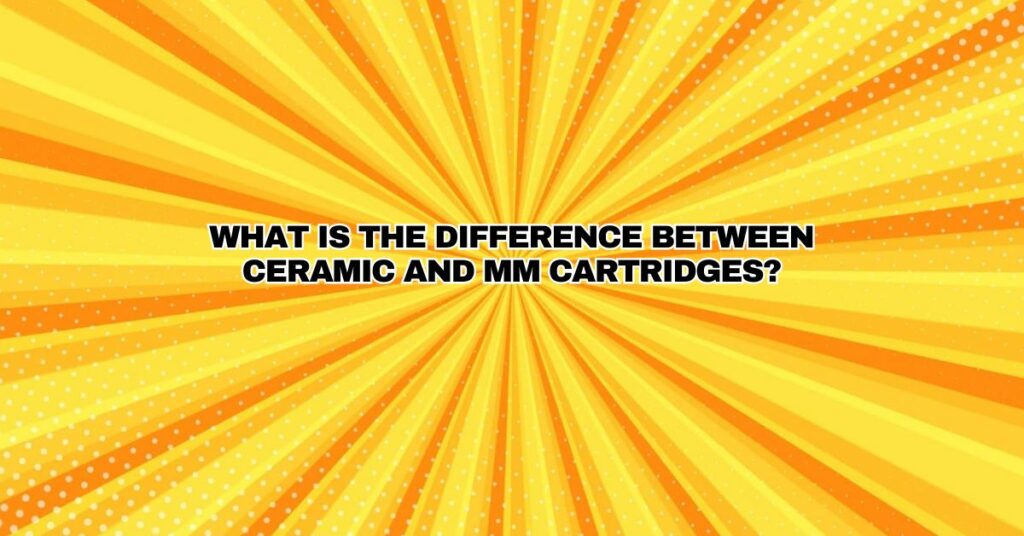Phono cartridges play a pivotal role in the world of vinyl playback, translating the grooves of vinyl records into electrical signals that can be amplified and converted into music. Two common types of phono cartridges are ceramic cartridges and moving magnet (MM) cartridges. In this article, we’ll delve into the key differences between these two types of cartridges, examining their technology, sound characteristics, and best use cases.
Ceramic Phono Cartridges:
1. Technology: Ceramic cartridges are one of the earliest types of phono cartridges. They utilize a ceramic element to generate the electrical signal from the vibrations picked up by the stylus as it tracks the grooves of a vinyl record. A piezoelectric crystal or ceramic element is a fundamental component in these cartridges.
2. Sound Characteristics: Ceramic cartridges are known for their distinct sound characteristics, which can be summarized as follows:
- High output voltage: Ceramic cartridges typically produce a relatively high output voltage, making them compatible with amplifiers and receivers without dedicated phono preamps.
- Pronounced midrange: They tend to emphasize the midrange frequencies, resulting in a warm and rich sound profile. This characteristic can be appealing for certain genres of music, particularly older recordings.
3. Best Use Cases: Ceramic cartridges are often found in vintage and all-in-one record players, including portable suitcase-style turntables. They are suitable for casual listening and for people who appreciate the warm and nostalgic sound they provide.
Moving Magnet (MM) Phono Cartridges:
1. Technology: Moving magnet (MM) cartridges are a more modern and widely used type of phono cartridge. They utilize a magnet, usually attached to the cantilever, which moves within a stationary coil to generate the electrical signal.
2. Sound Characteristics: MM cartridges offer distinct sound characteristics of their own:
- Versatility: MM cartridges are highly versatile and work well with a wide range of musical genres and recording styles. They can provide a more accurate representation of the original recording.
- Clarity and detail: MM cartridges are known for their ability to reproduce detail in the music, offering clear highs, well-defined midranges, and controlled bass frequencies.
- Standard output: MM cartridges typically provide a standard output voltage that requires a phono preamp for proper amplification. They may not require as much gain as some other cartridge types.
3. Best Use Cases: MM cartridges are widely used in various turntable setups, from entry-level to high-end audiophile systems. They are appreciated for their versatility and ability to provide accurate sound reproduction.
Key Differences Between Ceramic and MM Cartridges:
- Technology: The fundamental technology used in ceramic cartridges is the piezoelectric crystal or ceramic element, while MM cartridges employ a moving magnet to generate the electrical signal.
- Output Voltage: Ceramic cartridges typically produce a high output voltage, making them suitable for systems without dedicated phono preamps. MM cartridges require a phono preamp due to their standard output.
- Sound Characteristics: Ceramic cartridges tend to have a warm and rich midrange emphasis, while MM cartridges offer versatility and the ability to reproduce details more accurately.
- Best Use Cases: Ceramic cartridges are often found in vintage and budget turntables, while MM cartridges are used in a wide range of turntable setups, from entry-level to audiophile-grade systems.
In conclusion, ceramic and MM cartridges each have their own unique characteristics and best use cases. Your choice between them should depend on your musical preferences, the type of turntable you have, and your overall audio setup. Ceramic cartridges can offer a nostalgic and warm sound, while MM cartridges are known for their versatility and accurate sound reproduction.


